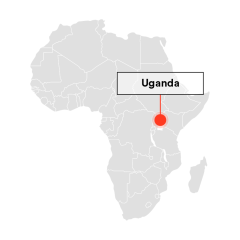Conduct research to inform programme design

Conduct research to inform programme design
Case Studies

In 2020, the Spotlight Initiative programme in Uganda conducted a mixed methods study to assess the knowledge, attitudes, skills and behaviours linked to VAWG, prevalent social norms, HIV-related behaviour and community responses to VAWG in two protection of civilian camps. Information was gathered through primary research and a review of secondary evidence, which the team triangulated to ensure consistency of findings. The team used the following techniques to gather data:
- Questionnaire-based survey: The team identified 270 individuals, including men and women, to participate in this survey. Trained research assistants visited these participants in the two protection of civilian camps and used a Kobo Mobile Data Collection tool to administer questionnaires. This questionnaire covered multiple issues including 1) knowledge, attitudes, skills and behaviour of people living in protection of civilian camps towards VAWG; 2) consequences of VAWG; and 3) awareness and engagement with institutions to report and respond to VAWG.
- Focus group discussions (FGDs): Spotlight Initiative also held 24 FGDs with 5 women (aged 25-49), 4 men (aged 25-49), 4 adolescent girls (aged 15-19), 4 adolescent boys (aged 15-19), 5 SASA! activists and 2 people with disabilities. These FGDs used open-ended questions to capture data on issues that were not captured in the questionnaire. For example, some participants provided testimonies on their experiences of VAWG, while others discussed the forms of VAWG experienced in the community, causes of VAWG in Protection of Civilian settings, and community expectations, reactions and responses to VAWG, among other topics.
The team analysed quantitative data and disaggregated variables based on age, gender and settlement. The team also analysed the qualitative data according to respondent group using coding and thematic analysis.
This data was then used to better understand the factors promoting or hindering gender equity and the perception of participants on VAWG prevention and response efforts - in order to inform programme design. It was also used to provide a baseline so that the programme could measure progress against indicators over the course of the programme to determine impact and effectiveness.






